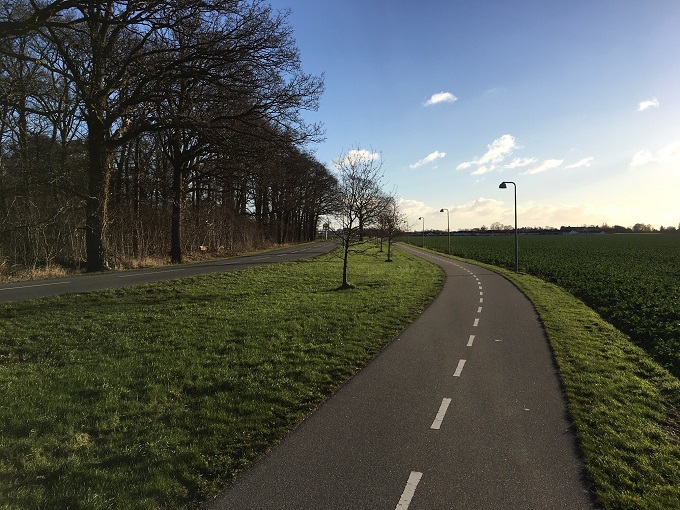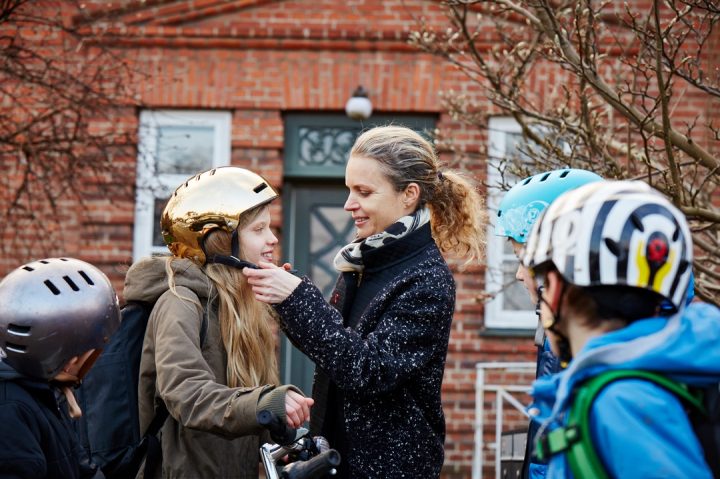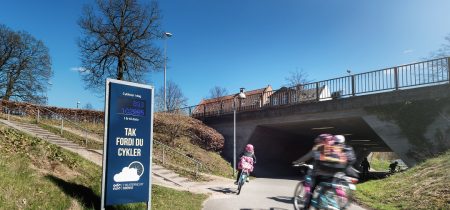Cyclist casualties
A survey of cyclist casualties cannot be based solely on police records. Unfortunately, cyclist casualty rates are not falling, largely owing to cars. Accidents occur primarily at intersections, and mostly on weekdays during the summer months. Those most at risk are men cycling in the country.
By Troels Andersen, Odense municipality
95% of injured cyclists are not registered by the police since they contact the hospital directly. However, all mortalities and the most serious cyclist casualties are registered by the police. Cyclist solo accidents can hardly ever be described on the basis of police records.
If a local authority really wishes to promote cyclist safety steps must be taken to establish an accident and emergency registration of traffic accidents. This has worked well at Odense University Hospital since the 1970s.
Another possibility is working with insurance registration or self-reported accidents, which among other things have been used in studies of the effect of cycle headlamps and visible cycling jackets,.
A number of safety analyses are based on behaviour studies with video recordings and conflict study based registrations, i.e. registration of situations that almost became a traffic accident. The method is typically too expensive for most local effect analyses.
The following is based solely on police registered casualties.
Cyclist casualty trends
The number of traffic accidents has dropped in recent years, but unfortunately the number of cyclist accidents remains stable. There are approx. 500 serious cyclist casualties and 20-30 mortalities annually.
Intersections are particularly dangerous for cyclists. Two out of three serious casualties occur at intersections. A total of 81 cyclists were killed, and 1,744 seriously injured in an intersection accident between 2012-2016.
The cause is usually the collision between cyclists and cars, but not lorries or vans. In recent years intersections have been restructured, requirements for lorry mirrors have been sharpened, and public campaigns have been initiated, all of which contribute to the fact that the number of cyclist fatalities in right turning accidents dropped from approx. 10 annually to between 1-5 annually. It is therefore important to remember that approx. 9 out of 10 cyclist mortalities are not due to right turning lorries.
Most accidents could have been avoided if the parties had looked both ways. Alas, we’re all human. Nevertheless there are many ways to improve the infrastructure.
Where do cyclist accidents occur?

- Cycling in rural areas can be dangerous, which is why cycle tracks are crucial for safety, and preferably at a distance off the road. Photo. Troels Andersen
The number and degree of seriousness of personal injury accidents by bicycle varies greatly from city to country. Four out of five seriously injured cyclists are injured in the country, which is where the greatest number of kilometers are cycled. Speed limits are higher in the country which is why the share of cyclist mortalities is higher in the country than in the city.
40% of all cyclist casualties occur at intersections without traffic lights, for example when the driver overlooks the cyclist or the cyclist doesn’t follow the right-of-way rules.
When do cyclist accidents occur?
The number of cyclist mortalities or serious casualties is greatest when the number of cyclists is greatest, i.e. on weekdays at peak time during the summer months outside summer holidays.
Over the weekend there are significantly more personal injuries in the evening and at night partially due to the greater share of cyclists under the influence of alcohol in the accidents. There is no maximum blood alcohol limit for cyclists in Denmark.
Cyclist casualties distributed by gender
There are slightly more mortalities and serious casualties involving men than women over a 10 year period, 54% men as against 46% women. The difference is somewhat greater when it comes to mortalities. Men’s share is more than 66% of cyclist mortalities. This is due to the fact that men cycle more in the country where driving speeds are higher.
DTU, Denmark’s Technical University, has estimated that a male cyclist’s own risk, i.e. his personal risk of being injured or killed, is 1.59 whereas for women there are 1.31 mortally or seriously injured cyclists per 10 million km cycled.
Cyclist casualties distributed by age
The greatest number of cyclist fatalities is in the 75 + age group, which is the age group that cycles least. This is caused by reduced reaction time and greater physical fragility, which aggravates the injury.
The greatest number of cyclist casualties is in the 25-64 age group, which is the age group that cycles most.
Bike helmets work
A meta-analysis of 40 scientific studies from 1989 -2016 concludes that:
- The risk of head injury is reduced by 51%
- The risk of serious head injury is reduced by 69%.
- The risk of facial injury is reduced by 33%.
- The risk of mortality is reduced by 65%.
There was no evidence that cyclists wearing helmets rode faster, were more prone to riding under the influence of alcohol, or to committing traffic offences, such as not following the right-of-way rules, or cycling on the pavement.
Bike helmet campaigns are consequently an excellent idea, provided they don’t discourage anyone from cycling.
The initial study of the new airbag helmet shows that it can potentially provide even better protection against head injury than the tradition bike helmet. However further research is needed to determine the effect in different situations and different conditions.
Cell phones and cyclists
A Dutch analysis from 2008 showed that 13.4% of primarily younger cyclists also carried out another activity while cycling.
Tests of 24 cyclists showed:
- Texting resulted in the greatest behaviour change. The cyclists found the situation mentally demanding and risky, and this resulted in their lurching and wobbling, which they compensated for by positioning themselves more centrally on the cycle track and by a speed reduction of 3 km/h.
- Talking on a cell phone also resulted in reduced speed,, but not more lurching or change of position on the cycle track. The cyclists found that talking on the phone was connected with greater mental activity and risk and they noticed fewer objects on the road.
- Both texting and talking on a cell phone reduced peripheral vision.
- Listening to music had no effect on cyclist behaviour or peripheral vision, and cyclists did not find it mentally demanding.
Sources
RUBA – Videoanalyseprogram til trafikanalyser, Trafik & Veje, marts 2016
Selvrapportering af ulykker, Katrine Meltofte, Trafikdage 2015
Ja, cykelhjelmen beskytter!, Nyhedsbrevet Trafiksikkerhedsforskning nr. 34
Airbags til cyklister, Nyhedsbrevet Trafiksikkerhedsforskning nr. 34
Cyklister, mobiltelefoner og MP3-afspillere, Nyhedsbrevet Trafiksikkerhedsforskning nr. 17








